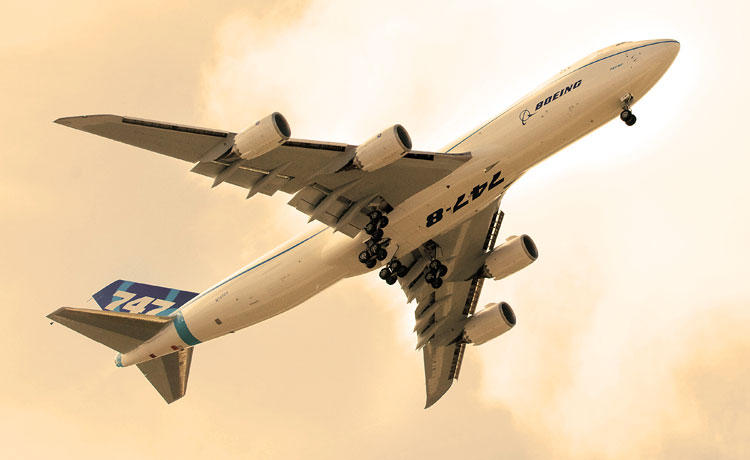INDIAN ARMED FORCES CHIEFS ON OUR RELENTLESS AND FOCUSED PUBLISHING EFFORTS

The insightful articles, inspiring narrations and analytical perspectives presented by the Editorial Team, establish an alluring connect with the reader. My compliments and best wishes to SP Guide Publications.

"Over the past 60 years, the growth of SP Guide Publications has mirrored the rising stature of Indian Navy. Its well-researched and informative magazines on Defence and Aerospace sector have served to shape an educated opinion of our military personnel, policy makers and the public alike. I wish SP's Publication team continued success, fair winds and following seas in all future endeavour!"

Since, its inception in 1964, SP Guide Publications has consistently demonstrated commitment to high-quality journalism in the aerospace and defence sectors, earning a well-deserved reputation as Asia's largest media house in this domain. I wish SP Guide Publications continued success in its pursuit of excellence.
The 747 – Boeing’s Biggest Baby
The genesis of the 747 can be traced to Boeing’s failure to win a crucial competition for a new military transport

Not for nothing was the Boeing 747 called “Queen of the Skies” and “Jumbo Jet”. The most famous airliner ever to grace the airways was over twice as large as its predecessors, the Boeing 707 and the Douglas DC-8. Following its first flight in 1969, until the first flight of the Airbus A380 in 2005, it reigned supreme as the largest passenger plane. It introduced economies of scale, made air fares cheaper and mass tourism possible. It changed air travel beyond recognition thanks to its capacity to carry hundreds of passengers nonstop over great distances.
The genesis of the 747 can be traced to Boeing’s failure to win a crucial competition for a new military transport. Boeing decided to use the expertise gained to develop a large airliner. At the same time, Pan Am, one of Boeing’s biggest customers, wanted larger aircraft to accommodate the throngs of travellers on its overseas routes and pre-ordered 25 Boeing 747s.
Some 50,000 Boeing employees called “The Incredibles” were responsible for building the 747. Everything about the plane was big – so big that a new building had to be specially constructed to house it. The 5.6 million-cubic-metre 747 assembly plant in Everett, Washington, was the world’s largest building by volume. The project’s lead engineer was Joe Sutter, who had worked on all the company’s previous commercial jets. He was later called “the father of the 747”. A quiet, nononsense man, he steered the project through a tricky development and construction period of just 29 months against the usual 42 months for a new passenger plane. Two principles guided his design philosophy. The first was safety, because if a single 747 crashed, more people would be killed than in several other accidents. The second was the assumption that one day, these planes would all have to become freighters.
Building the 747 was a highly risky undertaking for Boeing financially because it was working on an even more ambitious project, the Supersonic Transport (SST), a rival for Concorde. The SST was finally abandoned as impractical. The first 747 rolled out on September 30, 1968. After its successful first flight on February 9, 1969, a year of intensive testing followed. The first passenger flight was by Pan Am on January 22, 1970, between New York and London. Passengers loved the spacious new airliner. However, airport baggage systems were overwhelmed, taxiways were too narrow and ground equipment had to be redesigned. Although these problems were soon resolved, two major factors caused sales of 747s to plummet: the United States entered a recession and the 1973 oil crisis led to sky-high fuel prices. It was only in the 1980s that the situation became comfortable.
Boeing built the 747 as a single-deck wide-body, twin-aisle aircraft with a distinct hump on top of the fuselage. The airliner’s weight was supported by four main landing gear legs with four-wheel bogies each. Despite its massive size, pilots found that it handled like a much smaller aircraft and was very manoeuvrable. It was initially equipped with four wingmounted Pratt & Whitney JT9D engines, the first high-bypass turbofans to power a wide-body airliner. Later more advanced engines were offered. The wings had a high sweep angle of 37.5 degrees for a fast, efficient cruise.
Among the several variants built, the 747-400 was the most significant. First flying in 1988, it was a commercial winner with almost 700 sold. It could fly non-stop for 14,200 km at maximum capacity. And that capacity was 660 passengers in an all-economy layout. It holds the record for the greatest number of passengers ever carried by a commercial airliner. On May 24, 1991, an El Al Boeing 747-400 evacuated 1,088 people on a single flight from Addis Ababa, Ethiopia. Boeing claims its 747-8 Intercontinental is the fastest passenger jet in service today with a cruise speed of Mach 0.86 (1,060 km/h).
As of June 2020, Boeing has built 1,558 747s. In fact, the 747 is the only wide-body airliner in history to cross the 1,500 production mark. However, since new and more efficient jets have been entering the market, no passenger 747 has been delivered since July 2017. Further, the airline industry’s meltdown caused by the Covid-19 pandemic, has hastened the 747’s withdrawal from service. Fewer than 30 airliners are currently left in passenger service worldwide though several hundred are still used for cargo flights. In July 2020, Boeing announced that 747 production would end in 2022. Nevertheless the Boeing 747 remains one of the most iconic airliners ever, star of over 300 films. As a long-time Boeing pilot Tom Imrich said, “Every time I had the chance to take one airborne, or to test it to its limits and often beyond, it was uniquely special. It will always stand alone for its grace, beauty, agility, strength, speed and faithful response.”





